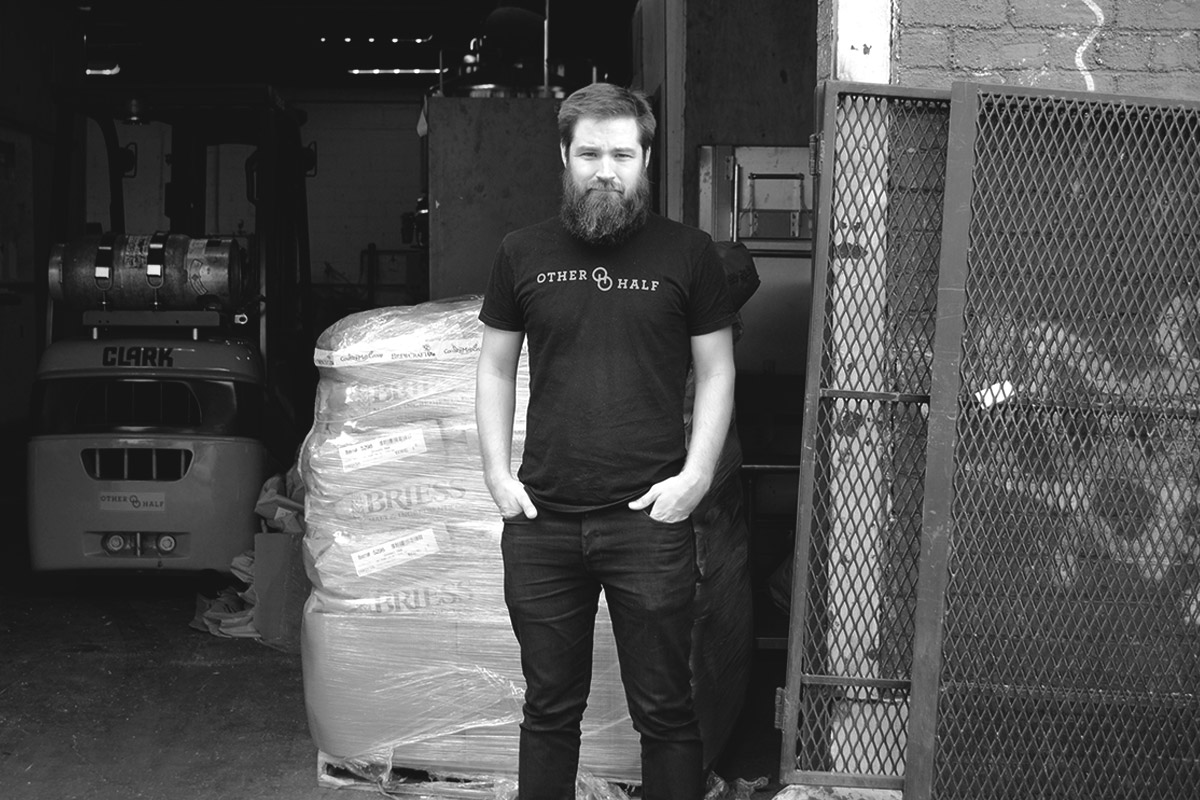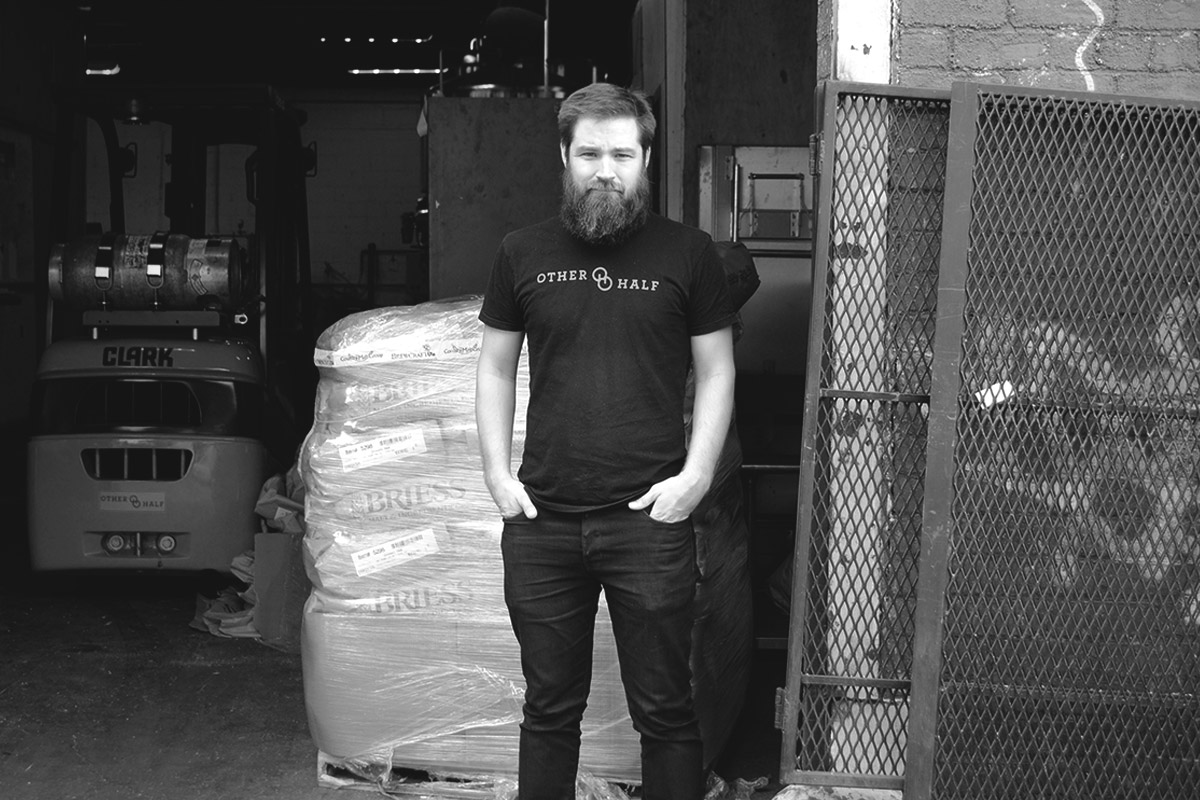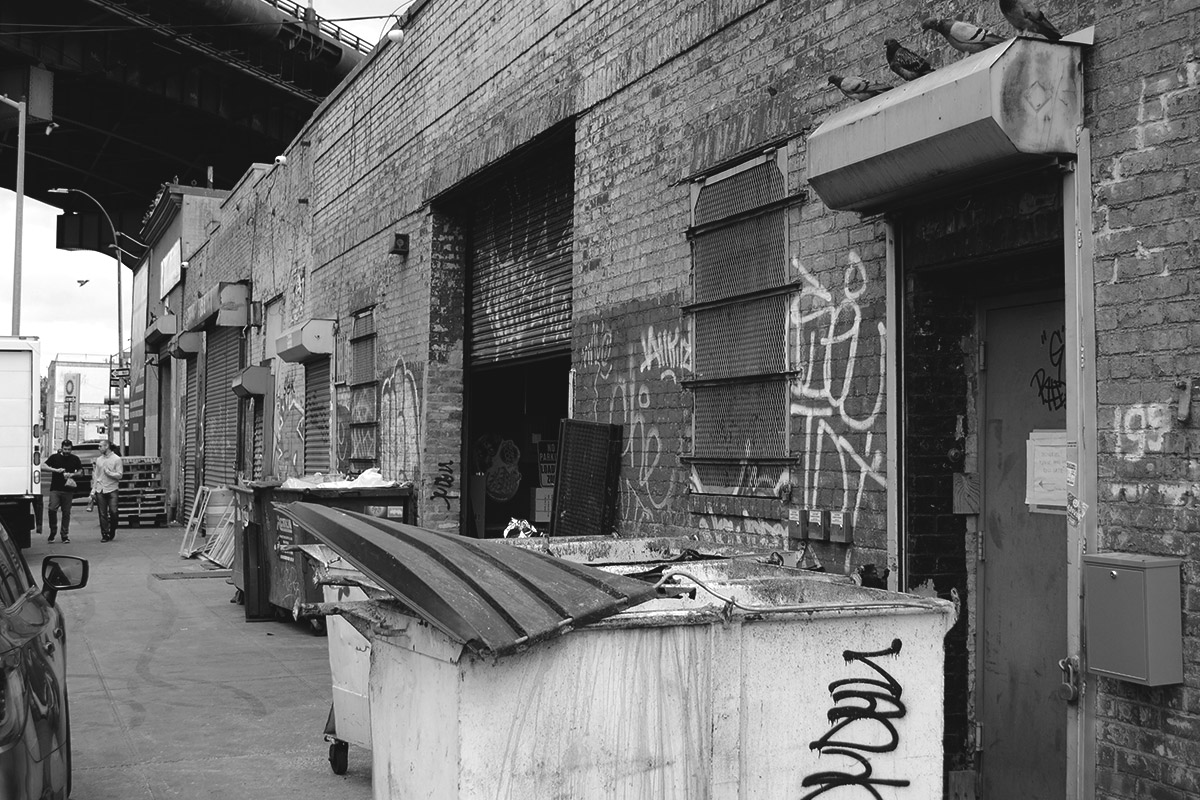This content was originally published by The Hop Review, a digital magazine that joined the Hop Culture family in March 2020.
This piece was written by Tom White.
BROOKLYN, NY
INTERVIEWED SEPTEMBER 28, 2016
AT OTHER HALF BREWING COMPANY – CARROLL GARDENS, BROOKLYN
New York City—home to more than eight million people and a global center of all things finance, art, fashion, and culture. There are very few things you won’t find happening in the Big Apple, but until very recently, one of those things was brewing. As the rest of the country embraced brewing traditions both new and old, NYC had lagged behind. While notable exceptions persisted (Brooklyn, Sixpoint), there wasn’t much to inspire fans of local brews. A city of fine wine, high-end cocktails, imports and $8 Bud Light drinkers was simply preoccupied–and missing the craft craze sweeping neighboring states.
The City’s craft brewing tide has started to turn in the last few years. One of those at the forefront of this more recent movement is Brooklyn’s Other Half Brewing. Started in early 2014, the diminutive brewery tucked into an old garage-beneath-an-overpass has become the pilgrimage destination of New York City’s buzzy-worthy beer. Along with Co-Founder Matt Monahan, Sam Richardson has stumbled upon the rather simple formula that gets beer geeks lined up for blocks on a Saturday morning: make great IPAs. We visited with Sam at Other Half’s quaint Carroll Gardens outpost to find out what held the NYC beer scene back for so long, and how they’re working to pick it up.
The New York beer scene has changed dramatically since we were last here. Why is now the time for beer in NYC?
That’s a good question and I think about this a lot. There were so few breweries in New York. It’s expensive and even what breweries there were haven’t made that much beer in New York City—a lot of Brooklyn and Sixpoint has been made outside of the city. There aren’t enough brewery employees to branch out and do their own thing. If you’re a city of four breweries–which is what it was when I moved here nine years ago–I’d guess there were maybe 10 people who physically made beer in the entire city. It was small business. We’ve had a slow build where there’s enough people who’ve actually worked in the business to have some kind of depth of knowledge and go on to open their own brewery. Also, we were behind because the cost of starting a business here is really intimidating and there’s a lack of space. Most people would choose to open a brewery somewhere else.
Logistically it must be a huge challenge to simply find affordable space here.
Yea, and also I think New York was behind in terms of interest in beer compared to the rest of the country. LA was like that forever as well. For whatever reason, both were lagging behind other cities in the country for brewers. Now we’re catching up and it’s starting to happen fast.
For being less than three years old, you’ve certainly hit the ground running. We read you acquired over 100 accounts in your first few months.
That’s probably true. We’re in New York City. The one thing about New York in 2014 and before, was there were almost no breweries here. There weren’t a lot of local options. If you were a bar owner and wanted to buy a beer made locally, you were looking at a handful of options. We were the first brewery to open in Brooklyn in nine years. When you think about that, in terms of the boom in the industry, that’s kind of insane.
Who was just before you?
“Most people would choose to open a brewery somewhere else.”
We hear your can releases are quite the event. What’s Saturday morning like at Other Half?
They have been pretty insane. We’ve been trying to get past that. The problem for us is that the lines tend to intimidate some of our locals and regulars who don’t want to wait in line. So our goal has been to make more beer so we can negate some of the line aspect. If we have more beer, some of the people who want to come early will get their beer. And a lot of other people love to just come and hang out–they love the line because their friends come, they drink beers together. They just like the whole experience.
But as you said, you must have a lot of fans who aren’t willing to line up for hours.
If they’re satisfied and getting their beers, we’ll have some left over at the end so we can say, “Hey, we have some beer.” We’re going to get those people who live in New York who just want to come have our beer but don’t care enough to wait. Not everybody wants to wait in line—it’s a big ask. I think certain beers will always create lines, like if we do a collaboration. There’s no other way for us to do it. Some of the beers we make more on a regular basis I think are going to get less draw, especially when there’s more available. It will be easier for everybody to get the beer they want. But the lines have been insane in the past—they get to be three blocks long.
“…Nobody gives a fuck about waiting in line for session pales.”
Do you remember the first time you realized, ‘Wow, people are lining up for our beer?’
We’d been open for a year when we first did a can release. We released a session pale called Superfun! with Simcoe and Galaxy hops—nobody gives a fuck about waiting in line for session pales. So even the fact that we got a line for that was kind of surprising. But it wasn’t like it’s been since.
What’s the longest line you’ve had?
Our Trillium bottle collab was pretty insane. Then we did one that was a collab with Beavertown [London] and then a second can with Cellarmaker [San Francisco]. We’ve been producing a few more cans now, and I think people realize that and there’s less pandemonium waiting. People are less fearful they’re going to miss out.
Was the early fanfare a surprise?
Yea, I mean it would be extremely naive to assume you’re going to open a brewery and assume you’re going to have people waiting in line. When we opened, we thought we were just going to make a bunch of draft beer for the market because that’s the easiest way to open cheaply. The mobile canning thing hadn’t really taken off at that point either. But everything kind of came together all at once.
Obviously you’re best known for your many IPAs. Was that always the plan?
I think we’re making more IPA now than we’d set out to do. We definitely wanted to be an IPA-focused brewery because it’s what we love. But I wouldn’t say we weren’t planning on only doing that. We still don’t only do that, but it’s 90% of what we do.
“…I like the full spectrum. I like variety. I want different tastes, different experiences—[we’re] trying not to get pigeonholed into one type of IPA.”
“IPA” is such a broad style nowadays anyway–what with the vast difference between those being made on each coast and in between. Where does Other Half fall?
We’re kind of in the middle ground. We have some that are more West Coast style although I still think even on those we focus more on the aromatics than a lot of West Coast breweries. Some of our New England style IPAs tend to be a little more bitter than a lot of the ones up there. A lot of those are just straight juice. I appreciate that but I also like the full spectrum. I like variety. I want different tastes, different experiences—trying not to get pigeonholed into one type of IPA.
You originally hail from Oregon and spent time in Portland. How do the NYC and Portland beer scene compare?
I’ll try not to piss anyone in Portland off… Portland has a much more conservative scene at this point. People have an idea of how things are done because there’s been a much more entrenched beer culture there, for longer. Everybody buys craft beer there. Everybody. People just buy craft beer when they go to the store…it’s just ‘beer.’ That’s amazing—that’s one of the best things that’s happened for Portland and for beer in general. They’re not thinking about anything other than they’re going to buy the beer they want to buy—not how “crafty” it is or how small the brewery is. At Other Half, we deal with a really small slice of craft beer lovers, because we sell directly to customers. We sell to the most hardcore lovers of craft beer. But in Portland, the breweries sell to a much broader spectrum of people. I would say that doesn’t exist here as much. A lot of the breweries that are opening now are selling directly to people that are super motivated craft beer lovers in a way that’s different than your casual, ‘go to the store and buy some craft beer person.’
Is that the only way to open a brewery in New York right now, selling from the source?
No, we’re just way behind. It’s starting to catch up. More people are getting interested in it and I think a lot of people just want to go to their Whole Foods and buy a 6-pack of good craft beer. But because there were no breweries here for so long and there are so many new breweries opening, there’s not a lot of entrenched culture. People here are doing whatever they want, in a way that’s different. Not that there’s not creativity in Portland, there is.
How are some of these non-traditional IPAs received out there, on the West Coast for example?
People are coming from breweries that have existed for 30 years and there’s definitely some push back on the New England style, on the West Coast. People don’t understand it—they think it’s just sloppy beer making. I get that, they have the right to that opinion. But I also think if they actually talked to people making the styles out here, they’d realize it’s not sloppy and that it is intentional. We should all be stoked there’re as many varieties of beer as there are.
Right–and there’s a reason the BJCP style guide keeps changing. There’s no time to stand still.
When you have a 30-year brewing tradition, when you’re one of the places that really drove the craft industry and people are coming in with styles that seem sloppy or lazy, they’re going to be a little dismissive of it at first. People are going to realize it is a good style and it just adds to the overall experience of drinking craft beer.
How is self-distribution in NYC? It seems hard enough in a city the size of Chicago…
Oh, it’s easier here. Everything is so close together. There’s bar after bar after bar. But self-distribution is, in some ways, harder–because every cold room is in a basement. So you’re trying to drag kegs into these basements that have crappy stairways.
And you haven’t slipped yet…
I haven’t. The first six months, Matt and I did pretty much everything here—just the two of us. I haven’t delivered a keg in a long time now.
I’m sure you don’t miss that.
I don’t miss it…well I do and I don’t. There were good things about it. We got to see people that we sold beer to all the time. Now, I don’t. I’m too busy trying to manage the business.
Let’s talk about the neighborhood and this space. This is Carroll Gardens?
Yea, we’re right at the intersection of Carroll Gardens and Red Hook. If you go right across the street from us, that’s Red Hook.
How did you come across this place?
Well Matt was living in Red Hook, I was living in Crown Heights, and our earlier partner Andrew was living up the street. So it was a point that was easy for all of us to get to. That was how we ended up looking in this neighborhood. Residentially it’s not the cheapest neighborhood. It’s pretty insane over here, but we were able to get a pretty reasonable deal on this space.
“People [in NYC] are doing whatever they want, in a way that’s different.”
We dig the gritty aesthetic of the space. What about your can packaging—how did you settle on such a simple, clean design?
I think it was a combination of our design aesthetic and that my wife owned an art gallery for about 10 years, so I had a lot of influence there. But we wanted to steer away from some of the more traditional packaging that’s in brewing.
It’s a hard decision for a lot of brewers to say they want to own the non-traditional route when the safe option is already figured out.
It felt safe to me because we’re in New York City and, in certain aspects of the industry, this is where it’s happening. Most fashion and art is based out of New York at this point. People are already primed for that, so it’s a little easier. I just wanted it to have a cleaner look. The All Green Everything can is the way it is because I kind of got it stuck in my head that I wanted it to be our calling card. In the art world, people’s cards are usually really simple with a nice font. So I thought, why don’t we just make a can that’s called All Green, we’ll make it green, and we’ll make the font look like someone’s business card.
Simple and to the point.
What’s in your fridge at home?
I have a Wakefield beer, I have a Kent Falls beer. I have some beers from North Carolina too.
Are you mostly a beer drinker?
Yea, but I drink wine and I like Mezcal. When we’re done with work trips we usually drink a lot of wine. It’s kind of our standard.
“We should all be stoked there’re as many varieties of beer as there are.”
-THR-
–––
Photography by Jack Muldowney.
Cheers to Sam and rest of the Other Half crew for allowing us to stop by during their busy brew day. Other Half beers are available exclusively in New York City and best found by visiting their taproom in person. Keep an eye on their Facebook for updates on upcoming limited can releases or stop by for one of their readily available, always-awesome beers.



















